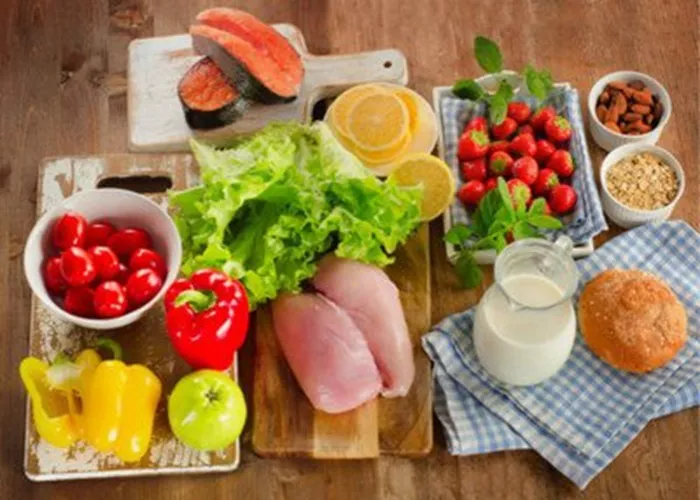Losing abdominal fat is a common goal for many individuals seeking to improve their health and appearance. While exercise plays a crucial role in achieving this goal, diet is equally important. Certain foods have properties that can help boost metabolism, reduce inflammation, and support overall weight loss, especially when it comes to burning abdominal fat. Here are 5 foods that you should consider to burn abdominal fat.
Lean Proteins
Introduction
Lean proteins are essential for muscle repair and growth. They also have a high thermic effect of food (TEF), meaning they require more energy to digest and absorb compared to carbohydrates and fats.
How They Help
Increased Metabolism: Consuming lean proteins can temporarily boost your metabolic rate, helping you burn more calories throughout the day.
Appetite Control: High-protein meals can increase satiety, reducing hunger and cravings, which can lead to lower overall calorie intake.
Muscle Preservation: During weight loss, maintaining muscle mass is crucial. Lean proteins support muscle preservation, ensuring that the weight you lose is primarily fat.
Examples: Chicken breast, turkey, fish, tofu, and legumes like beans and lentils are excellent sources of lean protein.
Whole Grains
Introduction
Whole grains are a type of carbohydrate that is minimally processed and contains all three parts of the grain kernel: the bran, germ, and endosperm. They are rich in fiber, vitamins, minerals, and antioxidants.
How They Help
Improved Digestion: The fiber content in whole grains promotes healthy digestion and helps keep your bowel movements regular.
Sustained Energy: Unlike refined grains, which can cause blood sugar spikes and crashes, whole grains provide sustained energy release, preventing overeating and snacking later in the day.
Appetite Regulation: The high fiber content in whole grains increases satiety, helping you feel full longer and reducing overall calorie intake.
Examples: Brown rice, quinoa, oats, barley, and whole wheat pasta are great examples of whole grains.
Healthy Fats
Introduction
Despite their high calorie content, healthy fats are essential for maintaining good health. They play a crucial role in cell function, hormone production, and nutrient absorption.
How They Help
Fat Burning: Healthy fats, particularly monounsaturated and polyunsaturated fats, can help boost your metabolism and promote fat burning.
Appetite Control: Consuming healthy fats can increase satiety, reducing hunger and preventing overeating.
Heart Health: Healthy fats like omega-3 fatty acids support heart health, reducing the risk of cardiovascular disease.
Examples: Avocado, nuts, seeds, olive oil, and fatty fish like salmon and sardines are excellent sources of healthy fats.
Fruits and Vegetables
Introduction
Fruits and vegetables are packed with essential vitamins, minerals, fiber, and antioxidants. They are low in calories and high in nutritional value, making them an excellent addition to any weight loss diet.
How They Help
Low Calorie Density: Fruits and vegetables are low in calories but high in volume, making them ideal for weight loss as they can fill you up without adding too many calories.
Fiber Content: The fiber in fruits and vegetables helps improve digestion, prevents constipation, and supports a healthy gut microbiome.
Antioxidants: The antioxidants in fruits and vegetables help reduce inflammation, support immune function, and protect against chronic diseases.
Examples: Berries, apples, oranges, leafy greens like spinach and kale, carrots, bell peppers, and cucumbers are all great choices.
Fermented Foods
Introduction
Fermented foods are rich in probiotics, which are beneficial bacteria that support gut health. A healthy gut microbiome is crucial for overall health, including weight management.
How They Help
Gut Health: Probiotics in fermented foods help maintain a healthy gut microbiome, reducing inflammation, improving digestion, and preventing gut disorders like irritable bowel syndrome (IBS).
Metabolism Boost: A healthy gut microbiome can improve your metabolism, helping you burn more calories and lose weight more efficiently.
Appetite Regulation: Fermented foods can increase satiety, reducing hunger and preventing overeating.
Examples: Yogurt, kefir, kimchi, sauerkraut, miso, and tempeh are all great sources of probiotics.
Conclusion
Incorporating these five foods into your diet can help support your weight loss efforts, particularly when it comes to burning abdominal fat. However, it’s important to remember that no single food is a magic bullet for weight loss. Instead, a balanced diet that includes a variety of nutrient-dense foods, along with regular exercise, is the key to achieving and maintaining a healthy weight.
It’s also essential to listen to your body and pay attention to how different foods make you feel. Everyone’s body is unique, and what works for one person may not work for another. Experiment with different foods and find what works best for you.
Finally, remember that weight loss is a journey, not a destination. Be patient, stay consistent, and focus on making healthy choices most of the time. With dedication and persistence, you can achieve your weight loss goals and feel your best.
Related topic:


